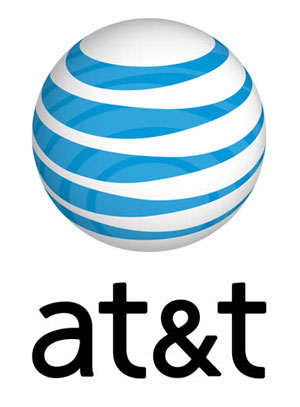AT&T Will Test 5G Networks, Expand Fiber, And More In 2017
AT&T revealed plans to field test 5G wireless networks, expand high-speed internet access, and trial a technology which could offer multi-gigabit wireless internet access via power lines in 2017. The company might not be the ISP of choice now, but it could offer exciting new services... with a few strings.
The work begins with 5G wireless networks. AT&T said it's tested connections of up to 14Gbps in lab trials, which is a marked improvement over 4G speeds, and that it's cut latency between tapping a link and opening a web page down to just 3ms. It's going to begin trials of these networks this year by building a test network in Austin. But there's a catch: The trial will be restricted to the company's DirecTV Now on-demand video-streaming app.
AT&T said in a press release:
[W]e plan to conduct a trial in Austin where residential customers can stream DIRECTV NOW video service over a fixed wireless 5G connection. As part of this trial, we'll also test additional next-generation entertainment services over fixed 5G connections. The trial will include multiple sites and devices, and we expect to further advance our 5G learnings – especially in how fixed wireless mmWave technology handles heavy video traffic. And over time, the reach of our 5G deployments will be enhanced even more as customers discover new, innovative mobile-first video services.
Limiting the tests to DirecTV Now customers makes sense. Deploying a new wireless network isn't easy; restricting access to a smaller number of people should give AT&T enough wiggle room to work on this network without having to worry about irritating many of its customers. The restriction is worrisome, however, in that it effectively gives DirecTV Now an edge over competing video services for as long as these 5G network trials are running.
On to happier things. AT&T said it wants its fiber network reach 12.5 million locations in 67 cities by mid-2019. In the nearer term, the company also revealed plans to introduce Fixed Wireless Internet (FWI) services in rural areas. The connections are unlikely to rival wired options, but they're still preferable to not having any internet access. (If only the United States would follow Canada's lead in making fast connections a basic human right.)
Here's AT&T's plan:
Get Tom's Hardware's best news and in-depth reviews, straight to your inbox.
We plan to begin offering FWI in mid-2017 in areas where we accepted FCC Connect America Fund Phase II (CAF II) support. We expect to reach more than 400,000 locations by the end of 2017 across the 18 states where we accepted CAF II funds, most of which will get internet access for the first time. By the end of 2020, we plan to reach 1.1 million locations in those 18 states.
Finally, the company also said it wants to make multi-gigabit wireless internet connections available via power lines. That would come from an initiative called Project AirGig, which AT&T described as "one of the most ambitious and inventive projects in AT&T Labs history." The company said it's filed more than 200 patents and patent applications related to the project and that it plans to start testing the technology in 2017. Other details were not revealed.

Nathaniel Mott is a freelance news and features writer for Tom's Hardware US, covering breaking news, security, and the silliest aspects of the tech industry.
-
Tim_124 "The restriction is worrisome, however, in that it effectively gives DirecTV Now an edge over competing video services for as long as these 5G network trials are running."Reply
From a supply/investment perspective this is exactly the type of incentive that encourages companies to invest the 10's of billions of dollars needed to deploy these new services. As long as their is competition (which there is in wireless connectivity) there is no lock out effect form the consumer. This is a guess on my part, but I would assume 99% of mobile plans have >20GB of monthly data usage. Right now video streaming isn't viable with 4G networks for the masses - the bandwidth simply isn't there. To suggest that a company finding a way to deploy a new network that could provide a service that is currently unavailable as "troubling" takes a myopic view to the entire ecosystem (i.e supplier incentives and consumer choice). We need to respect a balance between ensuring quality access on the consumer side and encouraging investment on the supply side. -
jeremy2020 More BS from AT&T. They will use their usual tactics claiming that fiber that just passes by somewhere is "connected" when there is no actual connection. They'll take our money through the government and run then raise their prices..again.Reply -
jsut71 F*** Austin!!!!! Why is San Antonio always the bastard step child when it comes to technology. I'm tired of TWC and their monopoly on higher bandwidth in this city.Reply -
jrrdmchls Great.... so my electric company just buried its lines. I guess I wont be getting this?? lolReply
